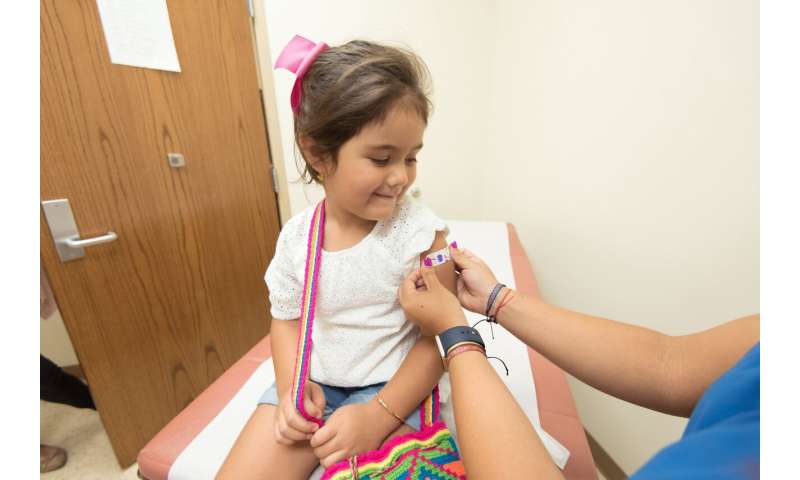Immunization programs yield high ‘return on investment,’ saving hundreds of billions of dollars

Immunization programs offered in low- and middle-income countries provide a high “return on investment” in terms of the economic costs of diseases that are prevented and the values of lives that would have been lost, according to a new study led by scientists at the International Vaccine Access Center based at Johns Hopkins Bloomberg School of Public Health.
The researchers, who report their findings in the August issue of Health Affairs, analyzed recent data on immunization programs aimed at preventing 10 infectious diseases in 94 low- and middle-income countries. The research team generated estimates for the economic cost of illnesses and broader losses due to disability and premature death that would occur without the programs, comparing those costs to the costs of the programs themselves.
Using a model that factors in treatment costs, lost wages, and productivity losses, the researchers estimate that the costs averted by implementing these immunization programs will amount to $681.9 billion for 2011-20 and $828.5 billion for the next decade. This estimated net benefit is about 26 times the immunization programs’ costs during 2011-20, and about 20 times their costs for the next ten years, 2021-30.
A second analysis based on the imputed monetary values of lives that will be saved by the immunization programs suggested net-benefit vs. cost ratios for the two decades of more than 50 to 1.
“This analysis shows that immunization programs now have and will continue to have a high return on investment,” says study senior author Bryan Patenaude, ScD, an assistant professor in the Bloomberg School’s Department of International Health. “It also helps put immunization program investments in perspective alongside investments such as education programs and infrastructure investments that might not otherwise seem comparable.”
The new study was conducted under the auspices the Decade of Vaccine Economics project based at the Bloomberg School’s International Vaccine Access Center. DOVE’s research provides economic evidence on vaccines that can be used by organizations such as Gavi, the international public health organization that sponsors immunization programs in low- and middle-income countries worldwide.
“The goal here was to show the return on ‘investment’ in economic or monetary terms, not just in terms of health impact,” says Patenaude. “Framing health investments in economic terms can help organizations and governments compare them to other social investments in an explicit and concrete way.”
For their analysis, the researchers analyzed Gavi’s data and other available data on the costs of immunization programs in 94 low- and middle-income countries against the meningitis-causing Haemophilus influenzae type b and Neisseria meningitidis serotype A; the pneumonia-causing Streptococcus pneumoniae; hepatitis B virus; human papillomavirus; Japanese encephalitis virus; measles virus; rotavirus; rubella virus (German measles); and yellow fever virus.
In the analysis, the costs of these programs will amount to an estimated $25.2 billion for 2011-20 and $39.9 billion in 2021-30 for the 94 low- and middle-income countries. Gavi hosts immunization programs, or has done so in the recent past, in most of the countries covered by the analysis.
The researchers compared these estimated costs to the estimated economic costs of illnesses in the scenario in which there were no immunizations against these pathogens. To do this they used two models. The first was a Cost of Illness model with estimates for cost items such as treatment of disease, lost caregiver wages, and productivity loss due to disability or premature death. The COI model yielded the estimated averted costs of $681.9 billion for 2011-20 and $828.5 billion for the following decade.
The second model, a Value of Statistical Life (VSL) model, was based on the estimated value of a saved life—a calculation derived from estimates of people’s willingness to spend money to reduce their risk of death. Based on this model the averted costs will be $1.31 trillion and $2.1 trillion for the two decades, respectively.
The estimated return on investment, the ratio between the net savings obtained by the programs and their cost, was therefore, for the 2011-20 decade, 26.1 using the COI model and 51.0 using the VSL model. For the 2021-30 decade, those figures were 19.8 and 52.2, respectively.
“Obviously, regardless of the approach you take to estimate benefits, immunization programs are a great value in terms of return on investment and have significant benefits over time,” says Patenaude.
The researchers bundled the estimates for the 10 pathogens together because Gavi typically offers programs with similarly bundled immunizations. But the investigators noted that measles virus was the largest driver of estimated disease-related costs.
“With some countries transitioning away from donor support, these findings can be used to advocate for sustained immunization financing,” says Elizabeth Watts, research associate at the International Vaccine Access Center and co-first author of the study.
Source: Read Full Article



